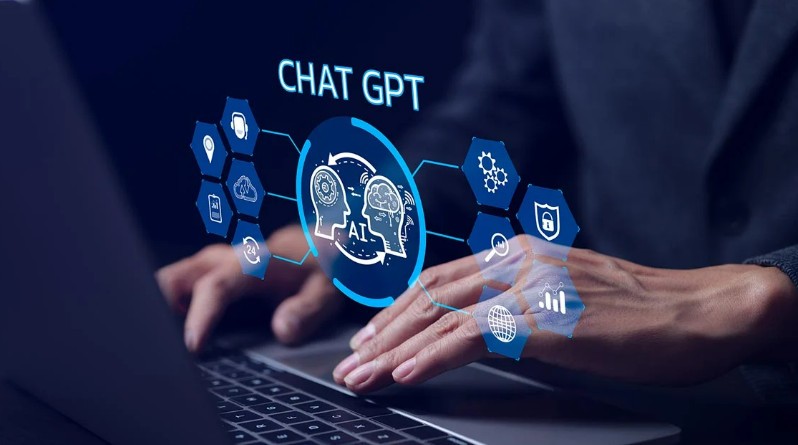In an era where conversational AI is revolutionizing user interactions, integrating a sophisticated language model like ChatGPT into your application can significantly enhance user experience. ChatGPT, developed by OpenAI, has gained substantial attention for its ability to understand and respond to human language with remarkable accuracy. This article will guide you through the process of integrating ChatGPT into your application, ensuring you leverage its capabilities to the fullest.
Understanding ChatGPT
ChatGPT is a variant of the GPT (Generative Pre-trained Transformer) model, specifically fine-tuned for understanding and generating human-like text. Its applications range from providing customer support to generating content and engaging in natural conversations with users.
Key Features of ChatGPT:
- Natural Language Understanding: ChatGPT excels in understanding context and nuances in language.
- Versatility: It can be employed in various domains like customer service, content creation, and more.
- Scalability: ChatGPT can handle a large number of queries simultaneously, making it ideal for applications with high user engagement.
Preparing for Integration
Before diving into the technicalities of integrating ChatGPT (https://www.axon.dev/blog/how-to-integrate-chatgpt-into-your-app), it’s important to plan your integration strategy:
- Identify the Use Case: Determine how ChatGPT will serve your app. Will it be for answering user queries, providing recommendations, or something else?
- Understand the Limitations: While ChatGPT is powerful, it has its limitations in understanding context and may require regular updates and training.
- Compliance and Ethics: Ensure that the use of ChatGPT aligns with privacy laws and ethical guidelines, especially regarding user data.

Technical Integration Steps
Step 1: Accessing the ChatGPT API
OpenAI provides API access to ChatGPT, which you can use to integrate the model into your application.
- API Key: Register with OpenAI and obtain your API key, which will allow you to send requests to ChatGPT.
- API Documentation: Familiarize yourself with OpenAI’s API documentation to understand how to make requests and handle responses.
Step 2: Setting Up the Backend
Your application’s backend will play a crucial role in interacting with ChatGPT.
- Server Configuration: Set up a server that will handle requests from your app and communicate with the ChatGPT API.
- API Integration: Write backend code to integrate the ChatGPT API. This will involve sending user input to ChatGPT and receiving responses.
Step 3: Building the User Interface
The user interface is where your users will interact with ChatGPT.
- Designing the Chat Interface: Create a chat interface in your app where users can type in their queries.
- Handling Responses: Display ChatGPT’s responses in a conversational format that is easy for users to follow.
Step 4: Managing Conversations
Managing the flow of conversations is critical to maintaining a coherent interaction.
- Context Management: Maintain conversation context to ensure that ChatGPT’s responses are relevant to the ongoing conversation.
- Session Handling: Implement session handling to manage interactions with individual users effectively.
Step 5: Testing and Deployment
Test the ChatGPT integration thoroughly before deploying it.
- Testing Scenarios: Test with various user scenarios to ensure that ChatGPT responds appropriately.
- Performance Testing: Ensure that your backend can handle the load and that response times are acceptable.
Best Practices for Integration

User Experience First
The integration of ChatGPT should be seamless and enhance the user experience. The conversation flow should be natural and engaging.
Regular Monitoring and Updates
Regularly monitor the interactions and update the model or integration based on user feedback and performance.
Handling Edge Cases
Prepare for and handle edge cases where ChatGPT might not provide the expected output. Implement fallback mechanisms in such scenarios.
Data Privacy and Security
Ensure that user data is handled securely and in compliance with data protection laws. Be transparent with users about how their data is used.
Advanced Features and Customization
Personalization
Consider personalizing conversations based on user data to make interactions more engaging and relevant.
Multilingual Support
If your user base is diverse, consider integrating multilingual support in ChatGPT to cater to non-English speaking users.
Voice Integration
For a more interactive experience, integrate voice capabilities allowing users to speak to ChatGPT and receive spoken responses.
Challenges and Solutions in ChatGPT Integration

Understanding User Intent
Challenge: ChatGPT might struggle with understanding complex user intents.
Solution: Implement additional natural language processing (NLP) techniques to preprocess user input and clarify intent before sending it to ChatGPT.
Response Quality Control
Challenge: Ensuring the quality and appropriateness of ChatGPT’s responses.
Solution: Implement filters and monitoring tools to check responses for accuracy and appropriateness.
Scalability
Challenge: Scaling the ChatGPT integration as user numbers grow.
Solution: Optimize backend services and consider cloud solutions to manage scalability effectively.
Conclusion
Integrating ChatGPT into your application can transform how users interact with your app, making it more interactive and engaging. By following this guide, you can ensure a smooth integration process, creating an enhanced user experience that leverages the power of conversational AI. Remember, the success of ChatGPT integration lies in how well it aligns with user needs and expectations. Continuous monitoring, updating, and refining based on user feedback will be key to maintaining a successful integration. With ChatGPT, you’re not just adding a feature to your app; you’re bringing in a dynamic and interactive element that can significantly elevate your app’s value.

